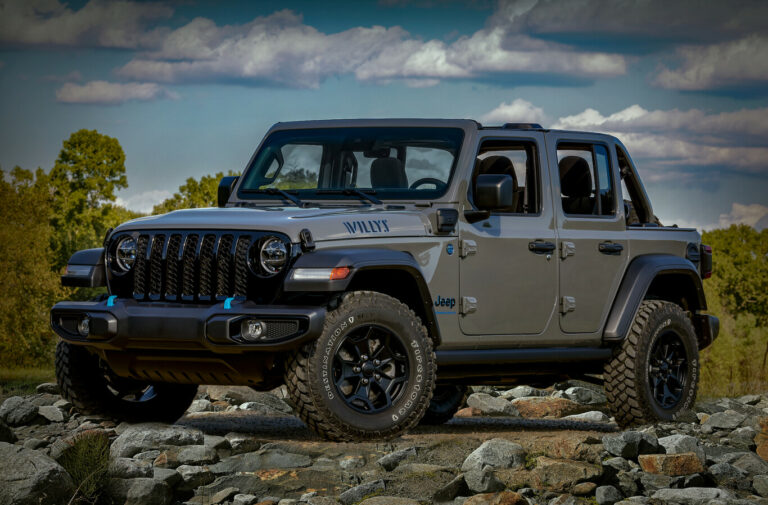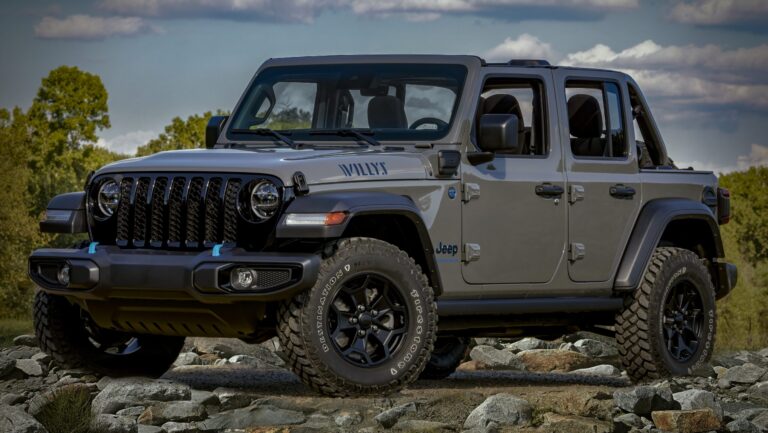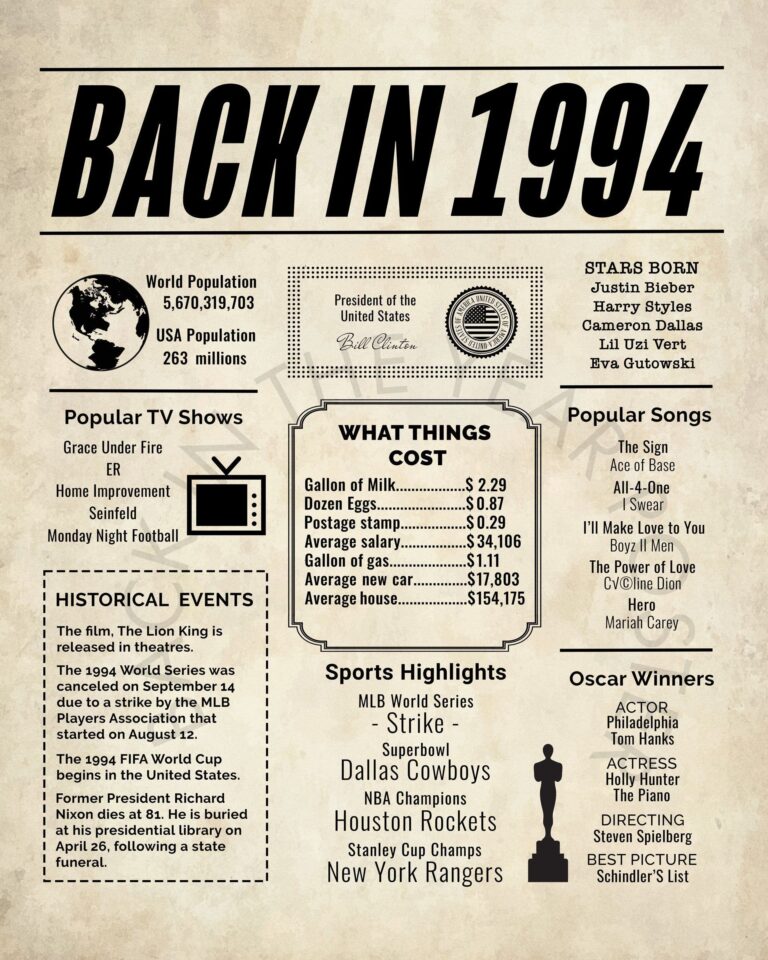Jeep Rubicon Dana 44 Axles For Sale: A Comprehensive Guide to Upgrading Your Off-Road Beast
Jeep Rubicon Dana 44 Axles For Sale: A Comprehensive Guide to Upgrading Your Off-Road Beast jeeps.truckstrend.com
For any serious off-road enthusiast, the axle is the backbone of their vehicle’s capability. When it comes to Jeeps, few names resonate with strength and reliability as much as the Dana 44. And within the Dana 44 family, the axles found in Jeep Rubicon models stand out as a highly sought-after upgrade or replacement for those looking to push their rig’s limits. This comprehensive guide delves into everything you need to know about Jeep Rubicon Dana 44 axles for sale, from understanding their unique advantages to finding, inspecting, and installing them effectively.
Understanding the Legendary Jeep Rubicon Dana 44 Axle
Jeep Rubicon Dana 44 Axles For Sale: A Comprehensive Guide to Upgrading Your Off-Road Beast
The Dana 44 axle has a storied history in the automotive world, particularly in heavy-duty applications and four-wheel-drive vehicles. Known for its robust design and ability to withstand significant abuse, it quickly became a preferred choice for manufacturers like Jeep. However, not all Dana 44s are created equal. The distinction of the "Rubicon" Dana 44 lies in its enhanced factory specifications, designed to meet the demands of the most challenging trails.
Jeep introduced the Rubicon trim level to offer an out-of-the-box, trail-ready vehicle. A core component of this readiness is the inclusion of Dana 44 axles, both front and rear, equipped with several key features that set them apart:
- Electronic Lockers (Tru-Lok): This is perhaps the most significant differentiator. Rubicon Dana 44s come standard with factory-installed electronic locking differentials. These lockers, engaged with the push of a button, force both wheels on an axle to spin at the same speed, providing maximum traction in low-speed, technical terrain where one wheel might lift or lose grip.
- Optimal Gearing: Rubicon models typically come with lower (numerically higher) gear ratios like 4.10 (common in JK/JL Rubicons) or even 4.88 (in certain JL Rubicon 392 and Xtreme Recon packages). These lower gears enhance torque delivery to the wheels, making it easier to crawl over obstacles and handle larger tires without excessive strain on the drivetrain.
- Stronger Components: While still a Dana 44, the Rubicon versions often feature slightly thicker axle tubes and stronger axle shafts compared to the standard Dana 44s found in some non-Rubicon models (e.g., rear Dana 44 in a Sahara). They are built to endure the rigors of serious off-roading.
These axles are found in various Rubicon iterations, including the TJ Rubicon (2003-2006), JK/JKU Rubicon (2007-2018), and the current JL/JLU Rubicon and JT Gladiator Rubicon models. It’s crucial to note that while they share the "Dana 44" moniker, there are significant differences between generations, such as axle width, mounting points, bolt patterns (TJ: 5×4.5; JK/JL/JT: 5×5), and front axle design (JK/JL/JT Rubicons feature a high-pinion front Dana 44, which offers improved driveshaft angles and ground clearance).

Why Upgrade to or Seek Rubicon Dana 44 Axles?
The allure of Rubicon Dana 44 axles stems from a combination of strength, functionality, and value. For many Jeep owners, especially those with Sport or Sahara models equipped with weaker Dana 30 front and Dana 35/44 rear axles, swapping in Rubicon Dana 44s is a highly desirable upgrade.
Here’s why they are so popular:
- Superior Strength: The Dana 44 housing and larger ring and pinion offer a significant strength improvement over the weaker Dana 30 front and Dana 35 rear axles. This is crucial for running larger tires (35-37 inches) and tackling challenging terrain without fear of breaking components.
- Instant Traction with Lockers: The factory electronic lockers are a game-changer for off-road performance. They provide unparalleled traction when you need it most, making difficult obstacles seem trivial. Adding aftermarket lockers to a non-Rubicon axle can be a costly and complex endeavor, making the factory-equipped Rubicon axles an attractive all-in-one solution.
- Optimal Gearing for Larger Tires: If you plan to install larger tires, the 4.10 or 4.88 gears commonly found in Rubicon axles are often a perfect match, restoring power and fuel efficiency lost by the increased tire diameter. Re-gearing existing axles can cost upwards of $1,500-$2,500 per axle, making a used Rubicon axle swap a potentially more economical route.
- Bolt-In Convenience (Mostly): For Jeeps of the same generation (e.g., JK Sport to JK Rubicon axles), the swap is largely a bolt-in affair, simplifying the upgrade process compared to custom-fabricated axles. While wiring for the lockers is required for non-Rubicon models, it’s a well-documented process.
- Cost-Effectiveness: Compared to purchasing brand new aftermarket heavy-duty axles (which can run $5,000-$15,000+ per axle), sourcing used Rubicon Dana 44 take-offs offers a significantly more affordable path to enhanced capability.

![]()
Where to Find Jeep Rubicon Dana 44 Axles For Sale
Finding Rubicon Dana 44 axles requires a bit of patience and knowing where to look. Since they are OEM components, the market is primarily driven by "take-offs" (axles removed from Jeeps being upgraded with aftermarket units) or salvaged vehicles.
Here are the primary avenues for your search:
- Online Marketplaces:
- Facebook Marketplace: This is often the most active marketplace for local private sales. Search for "JK Rubicon axles," "JL Rubicon axles," "Dana 44 take-offs," or similar terms.
- Craigslist: Similar to Facebook, good for local finds.
- eBay: Offers a wider geographical reach, but shipping large items like axles can be expensive.
- Dedicated Jeep Forums & Classifieds: Websites like JK-Forum.com, JL-Forum.com, WranglerForum.com, and various Jeep-specific Facebook groups often have "for sale" sections where members list parts. These communities are excellent for connecting with knowledgeable sellers.
- Salvage Yards & Auto Recyclers: Specialty salvage yards focusing on Jeeps or 4x4s are excellent sources. They often acquire wrecked Rubicons and part them out. Be prepared to travel or arrange shipping.
- Specialty Off-Road Shops: Many off-road fabrication and installation shops regularly upgrade customer Jeeps with aftermarket axles, leaving them with Rubicon take-offs. Call local shops and inquire about their inventory.
- Word of Mouth: Let your local Jeep club or fellow enthusiasts know you’re looking. Someone might know a friend of a friend who’s upgrading.
Key Considerations When Buying Used Rubicon Dana 44 Axles
Purchasing used axles requires careful inspection and due diligence to ensure you’re getting a good product and not inheriting someone else’s problems.
- Condition, Condition, Condition:
- Housing: Check for bends, cracks, or severe rust. A bent axle tube can lead to premature wear on bearings and seals.
- Differential Cover: Look for signs of impact damage or leaks.
- Rust: Surface rust is common and generally fine, but deep, structural rust is a red flag.
- Seals: Check for oil leaks around the differential, pinion, and axle tubes.
- Gearing Verification: Always confirm the gear ratio. Look for tags on the differential cover or axle tube, or rotate the pinion and count driveshaft rotations per wheel rotation. A mismatch in gearing between front and rear axles will destroy your transfer case.
- Electronic Locker Functionality: If possible, test the lockers. If buying sight unseen, ask for a video of them engaging. Inspect the wiring harnesses for cuts or damage.
- Axle Shafts: Inspect the U-joints (if applicable) and splines for wear or damage. Minor rust is okay, but severe pitting or bending is not.
- Ball Joints & Unit Bearings: These are wear items and are often due for replacement on used axles, especially if they have high mileage. Factor this cost into your budget.
- Compatibility:
- Front vs. Rear: Ensure you’re getting the correct axle for the intended position.
- Generation Specifics: JK axles are different from JL/JT axles (e.g., JL has larger tubes, different bolt patterns for brake rotors/calipers, and different steering components). TJ axles are significantly narrower and have a different bolt pattern.
- Bolt Pattern: TJ Rubicon axles are 5×4.5", while JK, JL, and JT Rubicon axles are 5×5".
- Width: Ensure the width is appropriate for your application, especially if swapping between generations or custom builds.
- Completeness: Do the axles come with brake calipers, rotors, steering components (tie rod, drag link), speed sensors, and parking brake cables? The more complete, the better, as these add-on components can quickly increase your total cost.
- Mileage and Donor Vehicle: Ask for the mileage on the donor vehicle and, if possible, the VIN. This can give you an idea of how much wear and tear the axles have seen.
Installation and Potential Challenges
Swapping axles is a significant mechanical undertaking. While a Rubicon axle swap is generally considered one of the more straightforward axle upgrades for a non-Rubicon Jeep of the same generation, it still requires proper tools, knowledge, and safety precautions.
- DIY vs. Professional Installation: If you’re an experienced mechanic with a well-equipped garage (jack stands, floor jack, torque wrench, impact tools), a DIY swap is feasible. However, if you’re unsure, or lack the proper tools, professional installation by a reputable off-road shop is highly recommended.
- Brake System: You’ll need to disconnect and reconnect brake lines, requiring proper bleeding of the brake system afterward.
- Locker Wiring: For non-Rubicon Jeeps, you’ll need to run wiring for the electronic lockers and integrate them into your Jeep’s electrical system. Aftermarket wiring harnesses and controllers are available, or some opt for a custom harness integrated with the factory ECU (which may require flashing).
- Driveshaft Compatibility: Depending on your lift height and the specific axle being installed, you may need new or modified driveshafts to accommodate new angles or lengths.
- Gearing Mismatch: If you’re only swapping one axle, ensure the gear ratio matches your existing axle. If not, you must re-gear the other axle to match, or you risk severe damage to your transfer case.
- Sensors and Electronics: Speed sensors, ABS sensors, and other electronic components must be correctly transferred and connected to avoid dashboard warning lights (e.g., ABS, ESP/Traction Control).
Practical Advice and Actionable Insights
- Set a Budget: Beyond the purchase price of the axles, factor in costs for new ball joints, unit bearings, seals, differential fluid, brake pads/rotors (if not included or worn), brake lines, locker wiring, and potentially driveshafts.
- Be Patient: The right deal might not appear overnight. Good quality Rubicon take-offs, especially for JL/JT, are in high demand.
- Ask for Details: Don’t be afraid to ask sellers for numerous photos, videos, and specific details about the axle’s history and condition. A reputable seller will be transparent.
- Inspect in Person: If possible, always inspect the axles in person before purchasing.
- Know Your Needs: Before you start searching, clearly define what you need. What’s your current gear ratio? What tire size do you plan to run? What generation is your Jeep? This will narrow down your search.
- Consider Freight Shipping: For long-distance purchases, freight shipping is often required. Get quotes beforehand, as this can add hundreds of dollars to the total cost.
Price Guide for Jeep Rubicon Dana 44 Axles For Sale
Prices for used Jeep Rubicon Dana 44 axles can vary significantly based on condition, mileage, included components (e.g., complete with brakes, shafts, steering), and geographical location. The generation of the Jeep also plays a huge role, with newer JL/JT axles commanding higher prices.
Here’s an estimated price range for complete take-off axles (including lockers and gears):
| Axle Type | Typical Price Range (USD) | Key Features Included (Common) | Notes/Factors Affecting Price |
|---|---|---|---|
| TJ Rubicon Dana 44 (Front) | $800 – $1,500 | E-Locker, 3.73/4.10 gears, narrow track width | Older, less common, often requires more refurbishing. |
| TJ Rubicon Dana 44 (Rear) | $700 – $1,200 | E-Locker, 3.73/4.10 gears | Older, less common, drum brakes typically. |
| JK Rubicon Dana 44 (Front) | $1,500 – $2,500 | E-Locker, 3.73/4.10 gears, high pinion | Very popular upgrade for non-Rubicon JKs. |
| JK Rubicon Dana 44 (Rear) | $1,200 – $2,000 | E-Locker, 3.73/4.10 gears | Often comes with disc brakes. |
| JL/JT Rubicon Dana 44 (Front) | $2,000 – $3,500+ | E-Locker, 4.10/4.88 gears, larger tubes, high pinion | Newer, higher demand, can be more expensive if low mileage/complete. |
| JL/JT Rubicon Dana 44 (Rear) | $1,800 – $3,000+ | E-Locker, 4.10/4.88 gears | Newer, higher demand. |
| Pair (Front & Rear) JK Rubicon | $2,500 – $4,500 | E-Lockers, matched gears | Most common complete swap, offers best value. |
| Pair (Front & Rear) JL Rubicon | $3,500 – $6,000+ | E-Lockers, matched gears | Highly sought after, can exceed $6,000 for pristine, low-mileage sets. |
Disclaimer: These are approximate market values for used axles as of late 2023/early 2024. Prices can fluctuate significantly based on condition, seller, location, and current market demand.
Frequently Asked Questions (FAQ)
Q1: What’s the main difference between a Rubicon Dana 44 and a non-Rubicon Dana 44?
A1: The primary difference is the factory electronic lockers (Tru-Lok) in the Rubicon Dana 44s, providing push-button traction. Rubicon axles also often come with more desirable gear ratios and, in some cases, slightly thicker axle tubes and stronger axle shafts than standard Dana 44s found in other trims.
Q2: Can I install Rubicon Dana 44 axles on my non-Rubicon Jeep?
A2: Yes, absolutely! This is a very common and highly recommended upgrade. For Jeeps of the same generation (e.g., JK Sport to JK Rubicon axles), it’s largely a bolt-in swap for the axle housing. However, you will need to wire the electronic lockers, which typically involves an aftermarket wiring harness and switches.
Q3: Do all Rubicon Dana 44s come with lockers?
A3: Yes, all factory Jeep Rubicon Dana 44 axles come equipped with electronic Tru-Lok differentials, both front and rear.
Q4: What gear ratios do Rubicon Dana 44s typically have?
A4: Most JK Rubicon Dana 44s come with 4.10 gears. JL/JT Rubicon Dana 44s commonly have 4.10 gears, with some special editions (like the Rubicon 392 or Xtreme Recon) featuring 4.88 gears. TJ Rubicon axles typically came with 4.10 or 3.73 ratios.
Q5: Are Rubicon Dana 44s strong enough for 37-inch tires?
A5: Generally, yes, a stock Rubicon Dana 44 can handle 37-inch tires, especially with careful driving. Many off-roaders run this setup successfully. However, for aggressive rock crawling or heavy-footed driving, upgrading to chromoly axle shafts is a common recommendation to enhance strength further.
Q6: What should I specifically look for when buying used Rubicon Dana 44 axles?
A6: Beyond general condition (rust, bends, leaks), specifically check:
- Gearing: Verify the ratio, as a mismatch can damage your transfer case.
- Locker Functionality: Test the lockers if possible; inspect wiring for damage.
- Ball Joints & Unit Bearings: These are wear items that might need immediate replacement.
- Axle Shafts: Inspect for straightness and U-joint condition.
Q7: Is it worth buying used Rubicon Dana 44s, or should I just go aftermarket?
A7: This depends on your budget and ultimate goals. Used Rubicon Dana 44s offer excellent value, providing significant strength and lockers at a fraction of the cost of new aftermarket axles. If you’re building a highly extreme rig with tires 40 inches or larger, or demand ultimate strength, aftermarket axles (e.g., Dynatrac, Currie, TeraFlex) might be necessary. For most serious off-roaders running up to 37-inch tires, Rubicon take-offs are an ideal balance of performance and cost.
Q8: What’s the bolt pattern on Rubicon Dana 44 axles?
A8: TJ Rubicon axles have a 5×4.5" bolt pattern. JK, JL, and JT Rubicon axles all have a 5×5" (5 on 5-inch) bolt pattern.
Conclusion
The pursuit of Jeep Rubicon Dana 44 axles for sale is a journey many off-road enthusiasts embark on to significantly enhance their vehicle’s capability. These axles, with their factory lockers, optimal gearing, and inherent strength, provide a robust foundation for tackling the most challenging trails. While finding the right set requires diligence, careful inspection, and a clear understanding of your needs, the reward is a Jeep transformed into a more formidable and reliable off-road machine. By leveraging the insights in this guide, you can navigate the market with confidence, secure a valuable upgrade, and unlock the full potential of your Jeep for countless adventures ahead.



